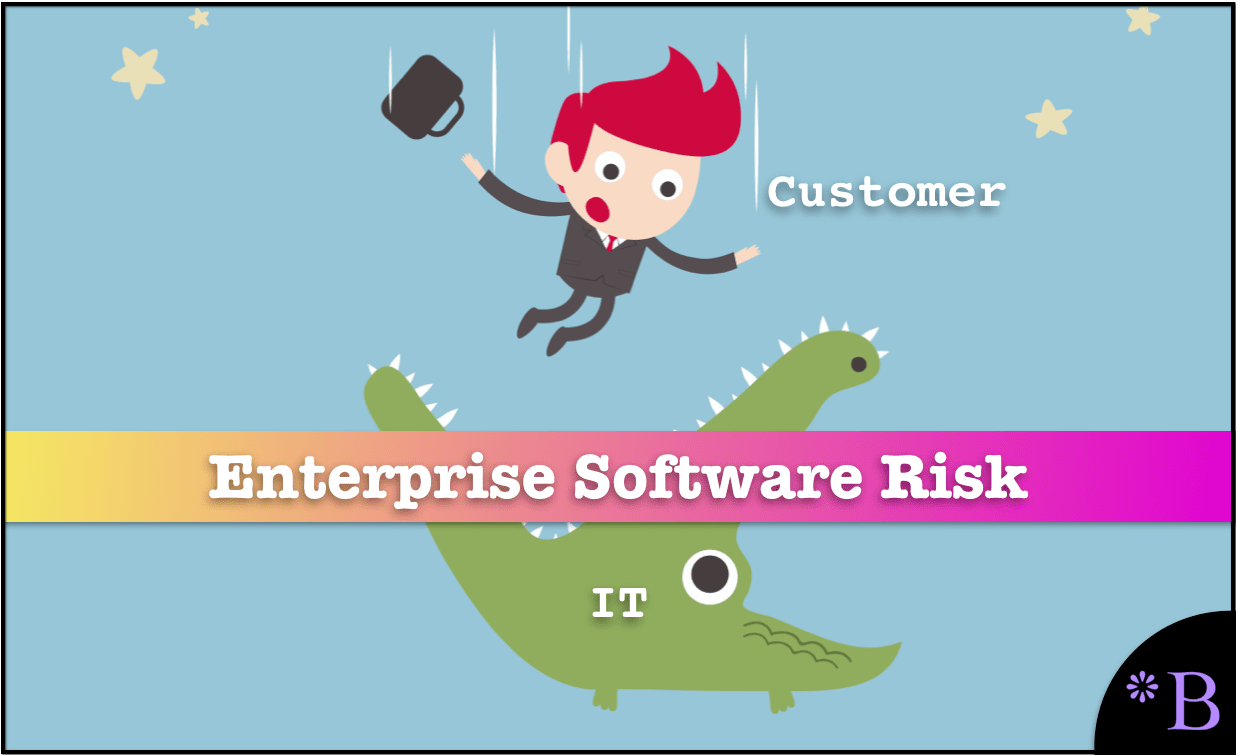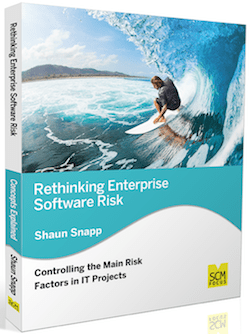
Enterprise Software Project Risk Management: How to Control the Main Risk Factors on IT Projects
What The Book Covers
This book is tied to the book Enterprise Software Selection. This is because the first place to manage risk is during the software selection phase, which is the opportunity to connect the best available application to the business requirements. There are, of course, many other risks that require enterprise risk management after the software is selected, and implementation has begun.
This is the first book to focus on the interpretation aspects of enterprise risk management in terms of the information that is received from the primary information providers, such as consulting companies, vendors, and IT analysts. The book explains how to triangulate on data sources, and is less about the mechanical aspects of enterprise risk management — which is covered in other books and online material. It is much more focused on providing practical information from years of experience in enterprise risk management and seeing how companies can often struggle to find accurate information and unbiased advice on the topic of enterprise software decision making. Surprise, not all information providers in this area lead companies to risk-appropriate decisions, and the book covers how many of the techniques that implementing companies use as shortcuts to reduce the risks of their projects increase the riskiness of their implementations.
- Vendor Risk Management
- Enterprise Risk Management
- Risk Assessment
- Client Specific Risk Assessment
Buy Now
A Book Based in Reality
The book provides many examples from real-life project experiences, the emphasis being on the reality of planning projects.
Interconnected to Web Information
In order the keep the book at a manageable and easily readable length, the book also provides numerous links out to the Brightwork Research & Analysis site, where supporting articles allow readers to get into more detail on topics that interest them.
Chapter 1: Introduction
- Books and other Publications on Enterprise Software
- Managing IT Project Risk
Implementation Risk Management Versus Software Development Risk Management - How Writing Bias Is Controlled at Brightwork Research & Analysis and Brightwork Research & Analysis Press
- The Approach to the Book
- The Brightwork Research & Analysis Site
- Intended Audience
- Abbreviations
- Corrections
Chapter 2: Enterprise Software Risk Management Misconceptions
- Strategy 1: Purchasing Software From Large Software Vendors
- Strategy 2: Purchasing More Software From One Software Vendor
- Strategy 3: Relying Upon Large IT Consulting Companies
- Strategy 4: Using a Single Prime Contractor
- The Reality of Setting Up Prime Contractors
- Strategy 5: Relying Upon IT Analysts
- Strategy 6: Support Staffing Level Planning
- Strategy 7: Low Support Staffing and Outsourcing
- Outsourced Support
- Conclusion
Chapter 3: The Basics of Enterprise Software Risk Management
- Conclusion
Chapter 4: Understanding the Enterprise Software Market
- Background on the Enterprise Software Market
- Requirements for an Efficient Market
- How Enterprise Software Stacks Up
- Are Prices are published and Easily Compared?
- Is The Product is Easily Compared or Rated by Unbiased
- Third Parties?
- Why the Enterprise Software Market is Inefficient
- The Outcome of an Efficient and Inefficient Market
- Making Better Future Decisions
- Conclusion
Chapter 5: Software Sell-Ability Versus Implement-Ability
Chapter 6: Controlling for IT Consulting Advice
Chapter 7: How to Use The Reports of Analyst Firms Like Gartner
Chapter 8: How to Interpret Vendor Provided Information to Reduce Project Risk
- Implementation Duration Estimation and Project Quality
- Who Makes the Initial Estimate?
- Getting the Estimate from the Right People in the Software Vendor
- Minimizing Risk Through Software Selection
- Conclusion
Chapter 9: Evaluating Implementing Preparedness
- Implementation Company Preparedness
- Data Management Preparedness
- Who Can Perform Preparedness Evaluations?
- Conclusion
Chapter 10: Using TCO for Decision Making
Chapter 11: The Brightwork Research & Analysis’ Risk Component Model
Defining The Components of Risk
- Application Related Risk Categories
- Vendor Related Risk Categories
- Project and Client Related Risk Categories
- Application Related Risk Categories Descriptions
- Vendor Related Risk Categories Descriptions
- Project and Client Related Risk Categories Description
- Conclusion

Buy Now
Questions about the Book?
Do you have any questions about the book? If so, please comment below, and we will address them.